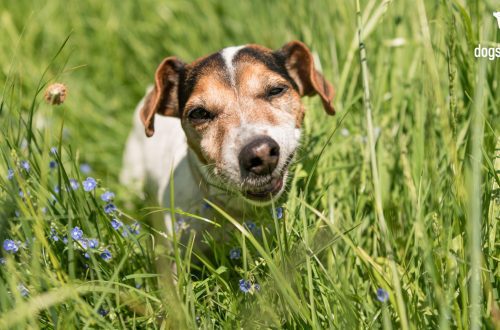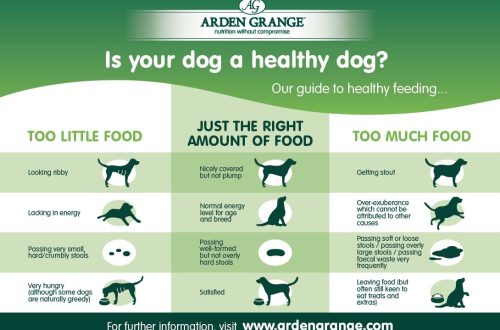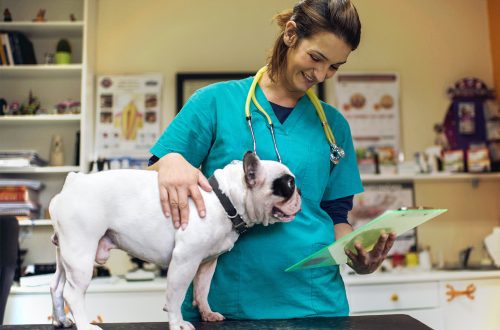
मुलासाठी कुत्रा: मुलांसाठी सर्वोत्तम जाती, शिफारसी
सामग्री
About the benefits of friendship between a dog and a child
Children living in a house where the dog is a full member of the family rarely grow up cruel, evil, selfish. Communication with a four-legged friend will teach the little person responsibility, discipline, respect for the desires of others.
Friendship with a dog helps children develop harmoniously – physically, intellectually, emotionally, aesthetically. You can start an exciting outdoor game with a dog, it is interesting to watch him, studying and analyzing his habits, you can always gently hug a dog, touch its soft fur, experiencing a feeling of tenderness and security. The very appearance of this pet develops a sense of beauty, because for the most part representatives of the dog tribe are harmoniously created creatures.
The dog gives the child a sense of self-confidence, because it is always ready to stand up for him. The fact that the dog executes the commands of the little owner increases his self-esteem. It has long been noticed that guys who have such reliable friends are often more sociable than their peers and more prone to leadership.
If a taciturn, self-contained child grows up in the family, the acquisition of a dog may help him open up to the perception of the outside world. He will be able to tell the dog about his anxieties and experiences, which for some reason he does not want or is afraid to share with his parents, and find the full understanding that lies in the smart and kind canine eyes. A dog, especially of an authoritative kind, is quite capable of becoming a link between a timid child and his peers, with whom he is embarrassed to meet.
Which dog is best for a child
Before getting a dog for a child and deciding on its breed, you need to consult with all family members so as not to violate their interests: the dog should not create discomfort in the house. An old grandmother will definitely not like a too frisky or too large pet that can knock her down; dad, for example, generally can be alien to fuss; and mom, quite possibly, will be nervous about the constant cleaning of wool clubs – the characteristic traces of a long-haired dog in the house.
Any dog for a child – small, large or medium in size – must have a stable psyche and good disposition, and not every breed demonstrates such qualities. You should not buy a puppy from your hands, without a pedigree, even if he is incredibly cute, and it is inexpensive, because in this case you cannot be sure that there were no aggressive dogs in his family. Of course, it is possible that such a dog will become a good friend to the child, but it must be borne in mind that mestizos, growing up, sometimes behave in the most unpredictable way.
Small, large or medium sized dog
The widely held opinion that the best dogs for children are proportionally small, like soft toys, is often refuted by a number of objective reasons. Not every small breed is characterized by a good character, and many baby dogs themselves claim to be the favorite child in the family, seeing their competitor in the child. Many small dogs have poor immunity, and care for their health falls on the shoulders of adult family members. In addition, active fun with a miniature dog is not always safe for him. If a large dog does not even notice that a child has stepped on its paw, then for a small pet such negligence may well result in a serious injury with serious consequences.
The indisputable advantage of a miniature dog over a large one is, of course, that even a seven-year-old child can walk it on its own. This is very important in the relationship between a dog and his little owner, because when a child keeps a dog on a leash, he asserts his authority.
The Internet is replete with touching photographs depicting children in the company of St. Bernards, Great Danes, Newfoundlands, Shepherd Dogs. These dogs, indeed, cannot be denied love for children, but it has a patronizing character. Their indulgence and endless patience with babies is astonishing: they abstract phlegmatically when they pull their ears, pull their tails, pounce with hugs and kisses, use them as a pillow. At the same time, giant dogs are always ready to join childish games, to “fuck” with the younger generation in nature, forgetting about their respectable status.
The largest group, which includes more than 200 breeds, are medium-sized dogs. Accordingly, the choice of dogs for a child in this category is the widest. Among the “middle peasants” there are a lot of dogs who love children and are ready to become their real comrades. For the most part, they are very mobile, active, some even excessively, they do not suffer, like small dogs, from the awkwardness of small owners, and keeping them on a leash is much easier than a large dog. With many of these pets, children establish equal friendships.
What breed of dog do you prefer?
The question of which breed of dog is best for a child is highly controversial. Fans of German shepherds claim that it is shepherds who are the best friends of children, and owners, for example, spaniels enthusiastically describe the advantages of their pets. Before giving preference to one of the numerous breeds of dogs, parents, of course, should familiarize themselves with its description in detail, learn from the cynologist about the differences in the behavior of females and males.
It is also important to take into account the age, character, temperament, gender of the child himself. Do not forget that it is very important for children how they look in front of their peers. If a girl proudly holding a Pekingese, Chinese Crested, Dachshund, Miniature Pinscher on a leash looks quite impressive and even envy her friends, then a teenage boy walking a pug or a miniature poodle runs the risk of causing sharp ridicule from friends.
Among dogs of small breeds, the undisputed leader for children of both sexes is the Yorkshire Terrier. This kid is very brave, agile, mischievous, quick-witted and, importantly, has a fairly strong physique. He sincerely loves sports games and at the same time does not mind when the little mistress dresses him up in various clothes, combs and ties bows. In courage, determination, strong texture, disposition towards children, the Yorkshire Terrier is not inferior to the Welsh Corgi, Miniature Schnauzer, Toy Fox Terrier, Border Terrier. These dogs are also distinguished by friendliness, balance, mobility. However, it should be borne in mind that dogs from the genus Schnauzers and Terriers, as a rule, do not get along with cats.
The Havanese, lapdog, dwarf poodle, chihuahua, Pekingese have a sweet and lively character.
Medium breeds have their own top representatives. In addition to the spaniel mentioned above, a Labrador is an excellent choice – a dog that loves not only children, but also all household members, as well as their relatives, neighbors and everyone else. This dog is ideal for mobile guys who are ready to go on long walks with him. But next to a homebody child, the Labrador will get bored, and his irrepressible radiant energy will begin to be realized within the walls of the dwelling, arranging chaos there.
The Golden Retriever, Irish Setter, Airedale Terrier, Beagle, Poodle are distinguished by their excellent character. A good friend and at the same time a reliable protector for a child will be a brave Giant Schnauzer, famous for his excellent instinct, intelligence and excellent reaction.
Among large breeds, Scottish and German Shepherds, St. Bernards and Newfoundlands stand out with special care and love for children. They not only sincerely love kids, but also protect them, showing incredible patience for children’s pranks. However, parents who purchase a large breed dog for their child should definitely consult a cynologist to learn about the intricacies of the peaceful and friendly coexistence of their child and a large dog. This consultation is especially important if the child was born in a family where a large dog already lives.
Dangerous dog breeds for kids!
There are certain breeds of dogs that should not be considered when choosing a friend for a child:
- dogs of fighting breeds – descendants of pickling dogs (Tosa Inu, American Bandog, Cane Corso, Bull Terrier, Pit Bull);
- Great Danes (Argentine, German, Canarian);
- Caucasian Shepherd Dog;
- bulldogs (Pakistani, American);
- Rhodesian Ridgeback;
- boerbool;
- बसेंजी;
- Brazilian Fila (or Brazilian Mastiff);
- Akita Inu;
- boxer;
- chow-chow;
- डॉबर्मन
- Alaskan malamute;
- rottweiler
Also keep in mind that any dog already trained as a watchdog will never become a sweet friend for a child.
Dog and child’s age
The relationship between a dog and a child is different. It depends on many circumstances, including the age of both. It must be understood that the dog considers the family member who is engaged in its upbringing and training to be its owner. If your child has reached the age of 13-14, and he is serious, responsible, has a balanced character, patience, it is quite possible for him to purchase a puppy of a large or medium breed so that the teenager can independently raise him, educate him and become a full-fledged dog owner.
Children under adolescence are rarely recognized as owners by dogs, they perceive them as friends, comrades, companions, accomplices in pranks. Such an attitude towards a child is typical even for baby dogs, the same miniature schnauzer, for example, has a very serious character and needs an authoritarian, “adult” upbringing.
A child can walk a small dog on his own as early as 7-9 years old. However, parents should anticipate possible dangers. If, for example, a dog lives in the neighborhood that is unfriendly to fellow tribesmen, you need to choose a time for a walk so that the animals do not intersect, otherwise both of your household members can get stressed. Walks should be carried out in the daytime and close to home. At first, it is useful to discreetly look at how things are going. If it becomes necessary to take the pet out at dusk, under any pretext, accompany the little owner of the dog, but do not take away the leash from him.
A child can walk a dog on his own only if he is able to keep it on a leash. During estrus, only adult members of the family should go for a walk with females.
Having bought a puppy for a child of 4-7 years old, parents should understand that taking care of the animal will fall on their shoulders. However, representatives of the older generation should behave in such a way that the child gets the impression that he is the owner of the dog. The kid must clean up scattered objects after playing with his four-legged friend, at a certain time walk the dog with his father or mother, he must be introduced to feeding the dog, entrusting the work of an “assistant”. During a joint walk, you can entrust the child to lead the dog on a leash. Some resourceful parents convince their children that dogs are very fond of being read to, and the kids enthusiastically take up this useful activity, feeling like mentors to a younger comrade.
Buying a dog for a child under the age of four is not worth it. This is not safe, as there are certain rules of conduct that must be followed when dealing with this animal. At a tender age, the baby is simply not able to recognize, accept and assimilate them.
सुरक्षा उपाय
The responsibility for the safety of children certainly lies with the parents, so the duet of the dog and the child, to one degree or another, should always be under their control.
You need to know that any dog, even the smallest one, can become dangerous for a child under certain circumstances. It happens that a dog who is used to living in a country house and running around wherever he wants, feels confused when moving to a city apartment, and due to the inability to throw out his energy, he is able to show character traits that were not characteristic of him before. If your pet is large, the consequences in case of aggression can be very serious. There are many reasons for changing the behavior of a dog, for an explanation of such a phenomenon, you should immediately contact a cynologist or veterinarian.
Children should be intelligibly, sometimes repeatedly, explained that the dog should not be touched when it eats, drinks or sleeps. Convince the child that if the dog moves away from him, does not want to communicate, then you do not need to pester him, follow him, stroke and caress. The kid will take your advice better if you say that the dog is just tired, older children can reasonably be explained that this is dangerous.
Don’t let your child physically punish the dog by yelling at it. A dog, and not everyone, is able to dutifully accept punishment from the owner, and he can react aggressively to such behavior of a younger family member.
If the baby constantly teases the good-natured and patient giant dog, settles down to sleep on it, you don’t need to be touched and encourage this behavior of your child, inviting you to admire the idyllic picture of neighbors and friends. A child can accidentally touch the pain point of the animal, and even if the dog simply growls in warning, this will be enough to make the obsessive child, to put it mildly, seriously scared.
The child must firmly learn that a growl, a dog showing bared teeth, means “the last warning.”
There is a big difference in the relationship between a child and a dog that grows with him from his puppyhood, and a baby with a dog that settled in the house even before the birth of the child. In the first case, conflicts occur extremely rarely, and in the second, their probability increases significantly.
In no case should a baby be left alone with a dog of any breed and size. When leaving the room, take either one or the other with you. Depending on how the old-timer dog will react to the growing family member, you will have to control the situation to one degree or another. Accident statistics show that most often dogs bite boys aged 5-12 years. In some cases, the dog has to be given away or kept in an aviary.





